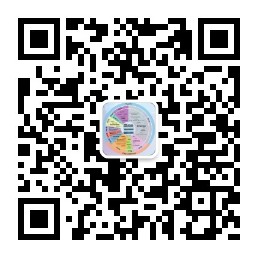
hotline:
17715390137
Tel/Wechat:
18101240246 (Technology)
0512-68565571
Email:mxenes@163.com (Sales Engineer)bkxc.bonnie@gmail.com
Scan the code to follow or search the official account on WeChat:
2D Materials Fronrier After paying attention,
click on the lower right corner to contact us,
Enter enterprise WeChat.
Professional Services Online

Diabetes is a global frequently-occurring disease that seriously threatens human health. Due to poor blood circulation, diabetic wounds take longer than normal skin wounds to heal. In order to promote wound healing, wound dressings are essential for repairing the skin and rebuilding skin function. In recent years, a large number of studies have reported that external electric field stimulation can guide the cells needed for skin wound healing and tissue regeneration to migrate along the electric field gradient to the injured site. It is an effective treatment method to promote wound repair and has attracted much attention in the field of tissue regeneration. In order to further accelerate wound healing, constructing a conductive wound dressing to respond to physiological electrical signals and external electric field stimulation at the wound site will help to more effectively transmit and distribute electrical signals to damaged tissues to promote skin wound healing.
In view of this, Professor Lu Xiong of Southwest Jiaotong University and Professor Lu Han of Ocean University of China reported on a conductive cellulose water with good flexibility, biological stability, conductivity and cell/tissue affinity based on the self-assembly of two-dimensional conductive cellulose nanosheets. Gel (PGCNSH) and coupled with external electrical stimulation to enhance cell adhesion and proliferation, thereby accelerating the healing of diabetic wounds (Figure 1). Related results were published in "Advanced Functional Materials" with the title "Conductive cellulose bio-nanosheets assembled biostable hydrogel for reliable bioelectronics". Yan Liwei, a PhD student at Southwest Jiaotong University, is the first author of the paper. The research was supported by the National Key Research and Development Program, the National Natural Science Foundation of China and other projects.

First of all, based on good cell affinity and stable electrical conductivity in a physiological environment, PGCNSH hydrogel can regulate cell behavior with the help of an external electric field. The author took C2C12 myoblasts as an example, cultured them on the surface of conductive PGCNSH and pure cellulose hydrogel, and applied different stimulation voltages (0, 300 and 900 mV) to C2C12 cells through a self-made high-throughput electrical stimulation device. To study the effect of hydrogel synergistic electrical stimulation on cell behavior. The experimental results show that, compared to pure cellulose hydrogel, C2C12 cells are more conducive to adhesion and proliferation on the surface of PGCNSH hydrogel under the condition of no electrical stimulation. Higher proliferation activity and more adhesion spots are detected. Formation. In addition, applying appropriate external field voltage stimulation (300 mV) can further enhance the proliferation, adhesion and differentiation of C2C12 cells on the surface of PGCNSH hydrogel.
Secondly, the conductive PGCNSH hydrogel can also deliver electrical stimulation in the body, and under the coupling action of external electrical stimulation, it can promote the repair of diabetic wounds. PGCNSH and RCH gel were implanted in the wound site of the skin on the back of diabetic mice, and electrical stimulation was applied to both sides of the wound. The general observation results showed that compared with the non-electrotherapy group (-ES), the electrotherapy group (+ES) showed a faster wound closure rate; and the wound closure rate of the PGCNSH+ES treatment group was significantly higher than that of the other groups. The wound basically healed after 28 days. In addition, histological section staining and immunofluorescence staining showed that the wounds in the PGCNSH+ES treatment group had less granulation tissue filling, more collagen deposition, and higher expression of α-smooth muscle actin (α-SMA). The results all show that the conductive PGCNSH gel as an "electronic skin" has the potential to promote chronic wound repair under the coupling action of electrotherapy. The research results provide an effective synergistic treatment strategy for accelerating the process of diabetic wound repair by coupling a conductive cellulose-based hydrogel dressing with electrical stimulation.

Figure 1 PGCNSH gel with biological stability and cell affinity is used as an electrical stimulator to regulate cell behavior and promote diabetic wound repair.
Original link:
https://onlinelibrary.wiley.com/doi/10.1002/adfm.202010465

| Reminder: Beijing Beike New Material Technology Co., Ltd. supplies products only for scientific research, not for humans |
| All rights reserved © 2019 beijing beike new material Technology Co., Ltd 京ICP备16054715-2号 |